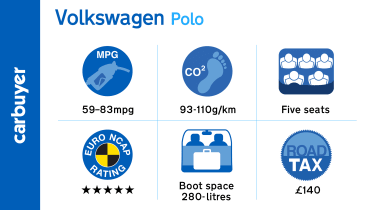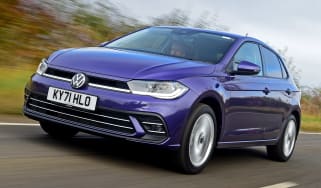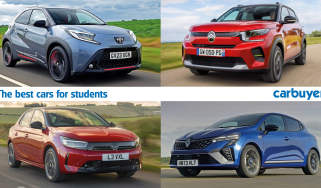Volkswagen Polo hatchback (2009-2017)
"The Volkswagen Polo is an upmarket supermini with a great interior and plenty of equipment. It’s not the most fun car to drive in its class, but it’s arguably the most grown-up."
Pros
- Wide range of engines and trims
- Upmarket interior
- Spacious inside
Cons
- Plain styling
- Basic engine feels slow
- Little equipment on entry-level car
The Polo is almost as much of a household name as its bigger sister, the Volkswagen Golf. It offers the same classy, desirable recipe, but in a smaller, less expensive serving.
More than ever before, the Polo has a real air of sophistication – and arguably more cachet than its supermini rivals the Ford Fiesta, Renault Clio and Peugeot 208, as well as the Vauxhall Corsa. However, Volkswagen is increasingly aware that cars such as the Kia Rio and Hyundai i20 are catching up to the Polo’s quality while offering very good value for money.
The Polo also shares major mechanical components with the Skoda Fabia, SEAT Ibiza and Audi A1 – three cars from the Volkswagen Group against which it has to fight for customers.
So, why choose a Polo? Well, if you base your judgement on the way a car drives, the Polo falls behind the Clio and Fiesta, both of which have a greater sense of fun from behind the wheel. You’ll find long-distance journeys to be less fatiguing in the Polo, however, thanks to a fluid ride quality, smooth, quiet engines and a real feeling of quality inside. In fact, it’s the latter where the Polo really scores over its rivals.
More reviews
The engine line-up is varied and has everything from a 1.0-litre petrol that particularly suits low-mileage urban motorists to a 1.4-litre TSI with 148bhp that really gets the Polo BlueGT moving. There’s a 192bhp 1.8-litre Volkswagen Polo GTI model, too; we’ve reviewed that separately.
Those who are likely to exceed 12,000 miles a year might be tempted by one of the 1.4-litre TDI diesel engines. Available with 74 or 94bhp, both will return 74.3mpg, but the latter is reserved for high-specification SEL and R Line models. Both produce 97g/km of CO2, placing the diesels in the 19% Benefit in Kind bracket for company-car tax.
Our favourite all-rounder is the 1.2-litre TSI petrol with 88bhp and our favourite trim level is Match. All Polo models have a five-inch touchscreen infotainment system with Bluetooth and DAB radio, but Match increases the touchscreen size to 6.5 inches, adds front and rear parking sensors, cruise control, 15-inch alloy wheels and tinted rear windows.
The SEL adds LED headlamps and 17-inch alloy wheels, while the R-Line give you sports seats and an aggressive body styling package, with specially styled 16-inch alloy wheels. A Beats edition is also available, with a branded and very loud 300-watt stereo. It should be noted that the entry-level Polo S doesn’t have air-conditioning as standard and the S and S A/C models can only have the 59bhp petrol engine.
If you’re trading down from a bigger car and don’t want to go without certain creature comforts, a little time spent on the options list can see your Polo adorned with all manner of bells and whistles, but can easily send the price soaring to well above typical supermini figures. It’s also a little galling that no model has autonomous emergency braking as standard – it’s optional across the range in an adaptive cruise control pack.
Aside from that disappointment, the Polo still makes a thoroughly sensible small family car. Whether you want a spacious city runabout, or a compact replacement for a luxury model, the Polo makes a compelling supermini choice.
The Volkswagen Polo finished 59th out of the 75 cars ranked in our 2017 Driver Power owner satisfaction survey of cars currently on sale in the UK.














